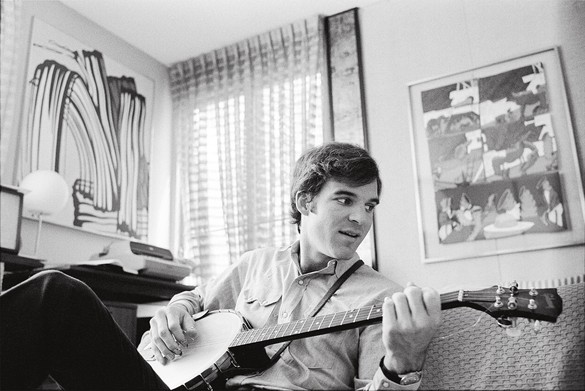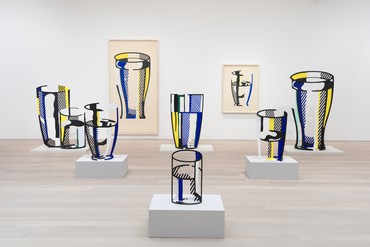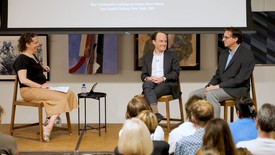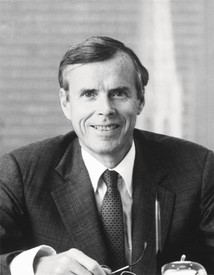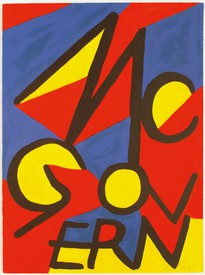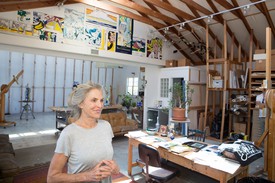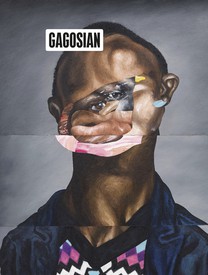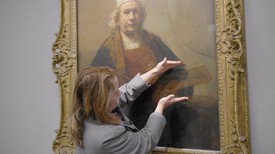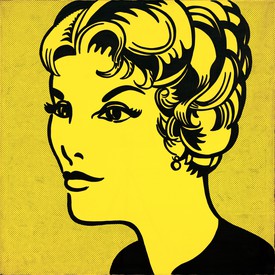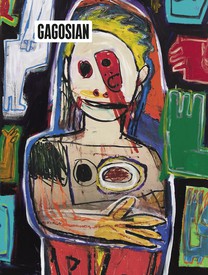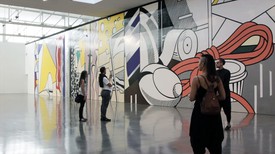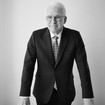
As an actor, comedian, author, playwright, screenwriter, producer, and musician, Steve Martin is one of the most diversified performers and acclaimed artists of his generation. Martin’s work has earned him an Academy Award, five Grammy awards, an Emmy, the Mark Twain Award, an AFI Lifetime Achievement Award, and the Kennedy Center Honors. As an author, Martin’s work includes the novel An Object of Beauty, the play Picasso at the Lapin Agile, a collection of comic pieces, Pure Drivel, a bestselling novella, Shopgirl, and his memoir Born Standing Up.
Roy and Irving: A bad name for a ’60s folk duo, but a great name for a powerful art combo.
The state of painting in the first half of the twentieth century was a chain of movements with clear beginnings and less clear fade-outs. Pollock morphed his early Surrealism into fury, and out of the swirl of Abstract Expressionism came a school called Color Field. One could argue there was a connection, one pouring angst, the other pouring delight. The successive isms of the twentieth century convinced us all that, yes, art progressed in movements, and once one movement sank, another would rise. One did: Pop.
In 1964, I was a carefree college student, interested in all things art. Pop art got the coverage: Lichtenstein and Warhol were taking over not only the art magazine headlines, but the newspaper headlines as well. Photos of cool New York art soirées made us Californians feel like hicks, but our love of art also made us feel we were in the know. We students could juggle the three highly different balls of AbEx, Color Field, and Pop. It turned out that the social-drinking Pop, not the hard-drinking AbEx, was the unruly one, the improper wannabe movement that didn’t even end in “ism.”
In California in the 1960s, when you turned sixteen, you intuitively knew how to drive a car. It was in the air. Likewise, a nineteen-year-old college student interested in the arts—even in the arts Siberia of Orange County—intuitively understood that Lichtenstein’s drawing of a ball of twine belongs comfortably in three categories: art, irony, and twine.
Lichtenstein, it seemed to me, was the King of Painting, while Warhol was the King of Flair. Warhol, dry and icy, Lichtenstein, surprisingly emotional. Noël Coward once commented on the potency of cheap music, and Lichtenstein’s comic strips touch on similarly authentic emotions: “Oh Jeff, I Love You, Too ... But ...” We’ve all been there—oh, the pain!—but there was still plenty of irony left over to make the saccharine acerbic.
I never met an AbEx painter, but I did have a glancing few minutes with Andy. (It was at a Saturday Night Live after-party. He wrote in his diary that he thought I was cute!) Eventually, I had pretty decent proximity to Roy, made possible by his wife, Dorothy, an energetic social force and gatekeeper for her shy husband. Once you got to know Roy, however, he was still shy.
My own career progressed, and by the late 1960s, I was a writer on The Smothers Brothers Comedy Hour. Suddenly, I had some loose cash. I went to Bullock’s department store in Westwood, where they had a new “arts corner,” and bought a genuine copy of Lichtenstein’s Little Big Painting (1965). It was printed on canvas—almost exactly like the real thing—and I assumed it was authorized because it was so blatant a steal.
In 1968, I wandered into the Ferus Gallery on La Cienega and bought an Ed Ruscha print of the Hollywood sign at sunset from Irving Blum, the upbeat, astute, proselytizing champion of the new art. At this point, I didn’t know Irving Blum was Irving Blum. I wisely bought it for one hundred and twenty-five dollars because I loved LA so much. Then, four years later, when the smog and traffic overcame me at Holloway and Santa Monica Boulevard, I foolishly sold it— thinking I was making a statement—and left Los Angeles for Santa Fe. I got seven hundred dollars for it and thought, “There’s money in this?”
I eventually met Roy and Dorothy in the early 1990s in New York, as my circle of friends narrowed in on them. My downstairs neighbors were Jim and Kathy Goodman. Both were honest dealers (is that a retronym?) who dealt in and collected Roy’s early drawings. In their dining room was an array of Lichtenstein’s precious pencil drawings from all periods, including, for a time, the hallowed Ball of Twine (1963).
Then, in my life, there were divorce, pets, rampant collecting, and a solid ten years of head-down career focus plus romantic gaffes.
Eventually I reconnected with Irving and his always-fun wife, Jackie. When I had dinners with them, Irving told inimitable stories in his boom-box voice: “ROY ... ANDY ... ED ... BILLY AL ...!” Jackie provided the color commentary that completed the anecdotes. I can remember sitting in their dining room with Warhol’s “Red Liz” over Jackie’s shoulder and his “Green Liz” over mine, knowing I was amidst history.
I was so taken with Irving and his deep, vast, first-person oral history of art, I insisted that he put his raconteur-ship on tape. Irving agreed to be interviewed by my very smart friend Victoria Dailey while a tape recorder caught everything. I was excited. But months went by, and we couldn’t seem to get a session booked. Finally, I said to Irving, “You don’t want to do this, do you?” “Not really,” he said. And we pretended that nothing ever happened.
Years passed, and now, spending more time in New York, I was invited to Roy’s new Greenwich Village studio. It was just he and I. We toured around his sleek painter’s paradise. Rows of stored paintings complemented rows of works in progress, ready to be tweaked. Gardens of small sculptures bloomed from tabletops. A landscape painting was on an easel. He turned it upside down and said, “I have to look at the marks. The marks have to work either way.” That is a paraphrase.
Through the years, I crossed paths with Irving, Jackie, Roy, Dorothy, and others at dinners and openings, and Irving filled in any pauses with his “You had to be there; however, I was there” stories that always had a healthy dose of self-deprecation. I worried that the small-framed Roy would be blown over by Irving’s big voice.
The shock of Roy’s sudden passing flattened us all. Frederic Tuten, superb author and a close friend of Roy, gave me the bad news, and New York changed in that moment. The tight bond of the uptown/downtown art friends who commuted and communed was broadsided, knocked off its slick track. No more dinners, no more flamboyant nights where we felt at the center of something wonderful. Now, no one could better pull together Roy’s vast sculptural output than the man who was there, Irving Blum.
Lichtenstein Remembered: Curated by Irving Blum, Gagosian, 980 Madison Avenue, New York, September 9–October 21, 2023
